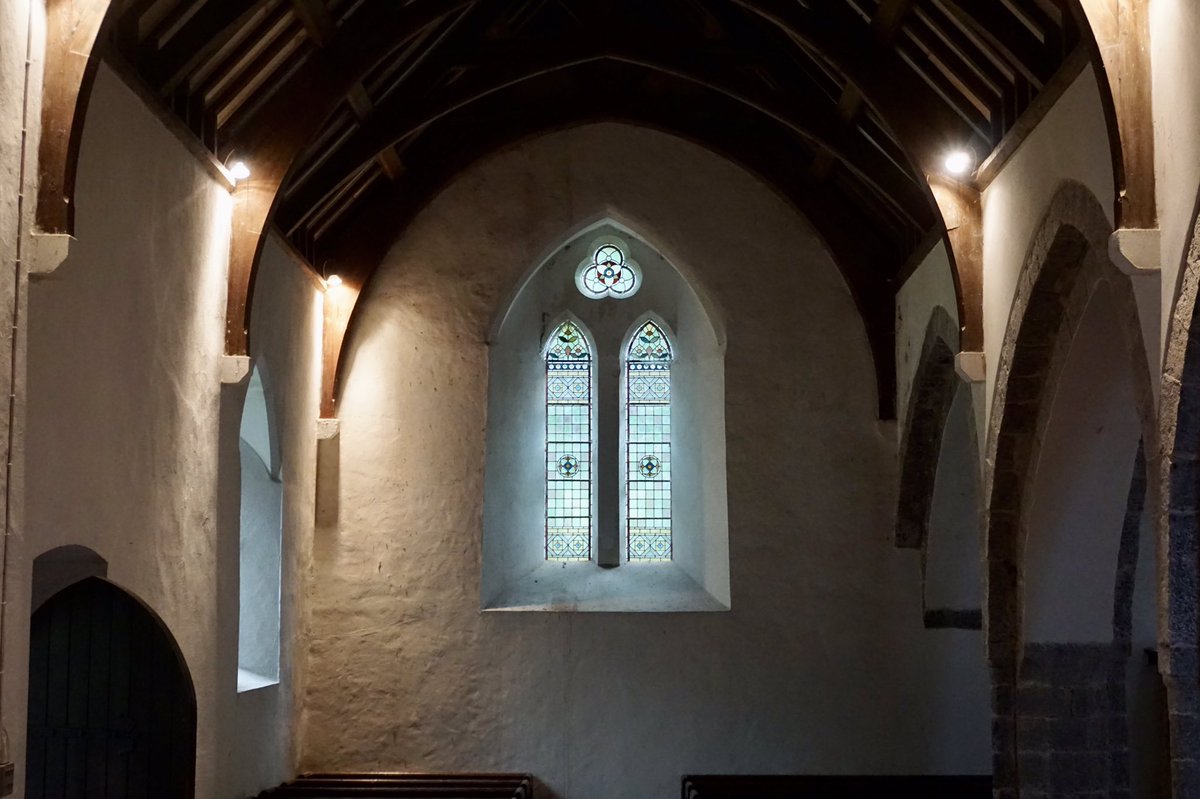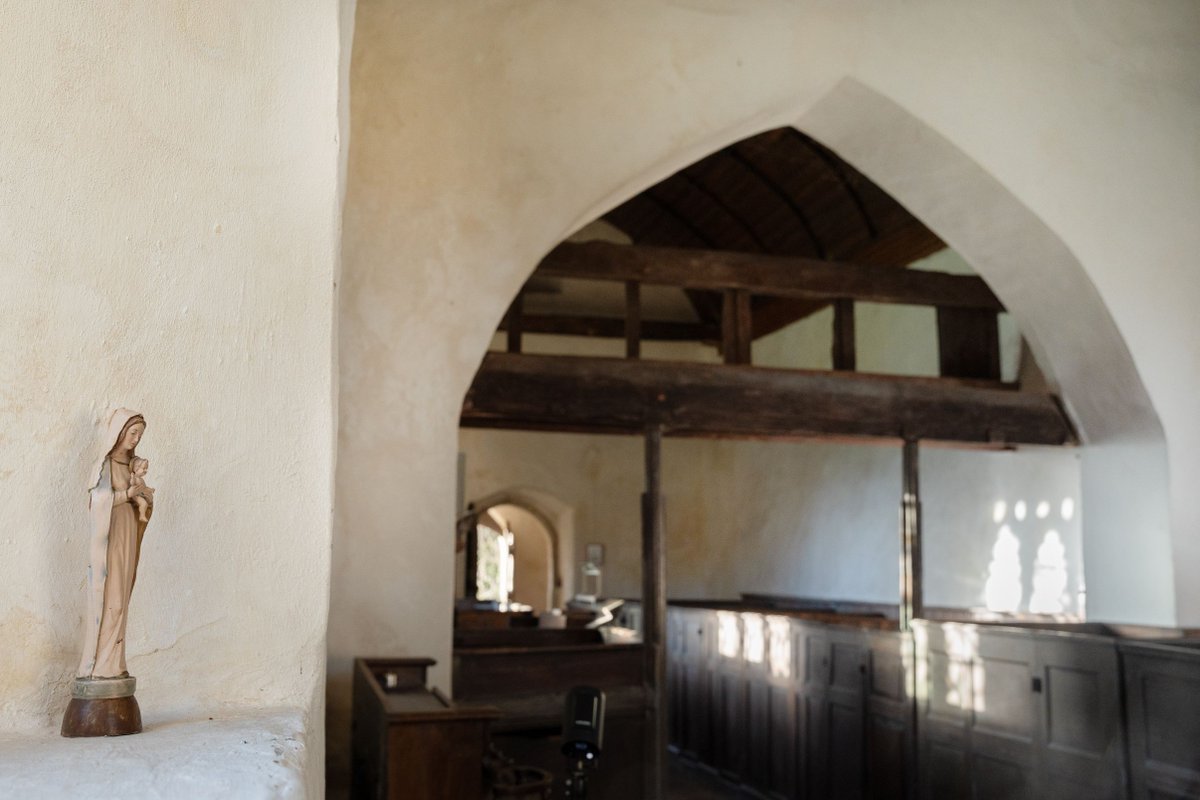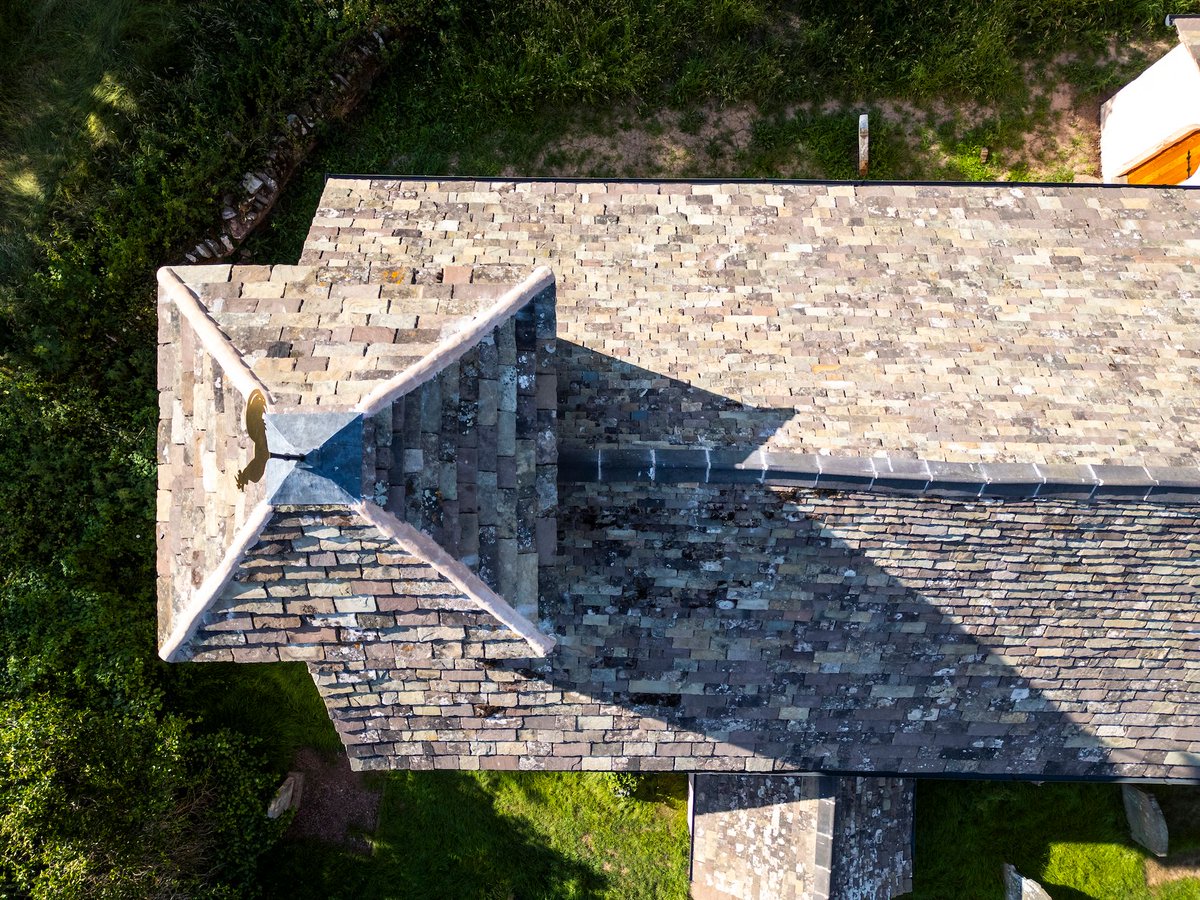The church at Castlemartin is a riddle of arches.
From yawning arcades and stone arcs floating in a limewashed wall to sloping skew-passages and pointed scars of lost roofs, these shapes chart the 900-year architectural history of the church.
#thread
From yawning arcades and stone arcs floating in a limewashed wall to sloping skew-passages and pointed scars of lost roofs, these shapes chart the 900-year architectural history of the church.
#thread

Cut into a steep sandstone bank just a couple of miles from the Pembrokeshire coast, the earliest parts are the south and western walls (and font) which date from the late 1100s. This includes, we believe, the four-bay arcade.
2/
2/

The chancel was rebuilt and extended in the 1200s. At the same time the north aisle was reconstructed and the tower erected over the south transept. A north transept was also added at this time.
3/
3/

The 13th century saw a considerable enlargement of the church, more or less doubling it in size. Such enlargements were often a response to the ritual and ceremonial requirements of the Sarum Use for the Mass and other liturgical rites.
4/
4/

In the 14th-century, the two storey porch was tacked on to the south.
The Reformation era of the 16th century, coupled with the introduction after 1549 of a less elaborate and more static liturgy, probably precipitated the reduction in size to the proportions we see today.
5/
The Reformation era of the 16th century, coupled with the introduction after 1549 of a less elaborate and more static liturgy, probably precipitated the reduction in size to the proportions we see today.
5/

The north and south chancel aisles were demolished, along with the north transept. The only evidence of their existence is the arches over the windows.
The north chancel aisle, where it abutted on the north nave aisle, was replaced by an angled passageway leading to the chancel.
The north chancel aisle, where it abutted on the north nave aisle, was replaced by an angled passageway leading to the chancel.

Except for the provision of a vestry on part of the site of the north chancel aisle, which was constructed in 1856 over a boiler-house and cellar, no additions were subsequently made to the church.
7/7
7/7
• • •
Missing some Tweet in this thread? You can try to
force a refresh






















